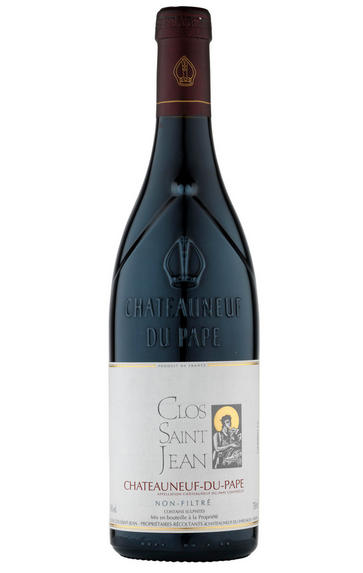
2018 Châteauneuf-du-Pape, Deus-ex Machina, Clos Saint Jean, Rhône
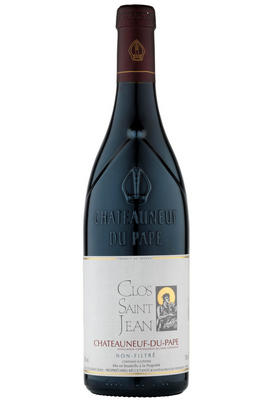
Critics reviews
Another terrific effort from this estate, the 2018 Chateauneuf du Pape Deus Ex Machina shares a sense of elegance with its vintage stablemate, the La Combe des Fous. Kirsch, stone fruit, black cherries, licorice, pomegranate…the list could go on and on. And while the wine is undeniably full-bodied, it doesn't come across as heavy or hot, instead being built on a lacy, silky structure of fine tannins and rounded acids that linger on the finish.
Pascal Maurel was reasonably happy with the 2018 vintage when I visited him in June 2019. "It's fine, elegant, feminine, not powerful like '15, '16, '17, but another side of the appellation," he said. His estate also controlled the mildew reasonably well, averaging yields of 25 hectoliters per hectare. The Maurel brothers have made a 2018 Sancto Santorum, but it wasn't available for tasting on the day of my visit. The 2017s have once again emerged as some of the finest wines in the appellation. "We were afraid [of the tannins] in the beginning," he said. "But after the élevage, we [found] the structure [to be] something very fine and well balanced." In addition to the 2017s and 2018s, we tasted three cuvées from 2009. "It wasn't the greatest vintage," Maurel said. "But it has some common points with 2017." While the regular bottling should be drunk up, the Deus Ex Machina still looks young, with plenty of life ahead of it.
The Maurel brothers went the extra mile to send me tank and barrel samples of their 2019s, so I've included those reviews here alongside the reviews of the bottled 2018s. Both years are successful here—the 2019s maybe slightly denser and more concentrated than the more elegant 2018s, but they aren't always better. This estate has become a model of consistency and excellence.
Drink 2020 - 2030
Joe Czerwinski, Wine Advocate (October 2020)
About this WINE
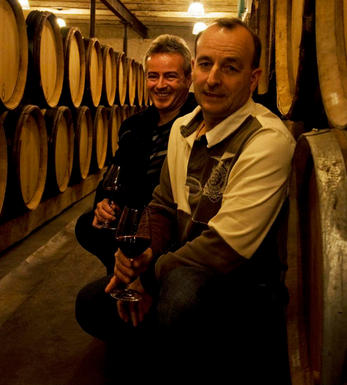
Clos Saint Jean
The brothers Pacsal and Vincent Maurel, with a little help from the larger-than-life and near-ubiquitous consultant Philippe Cambie, continue to work wonders with this famous old Châteauneuf du Pape Domaine Clos St. Jean.
The wine property is similar in size to Beaucastel and also has some spectacular parcels of old vines, its centurion-holders mainly situated on the Crau plateau. The winemaking here is traditional, yet the wines themselves seem to marry tradition and modernity with effortless aplomb.
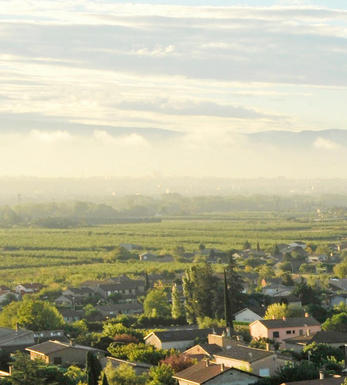
Châteauneuf-du-Pape
The most celebrated village of the Southern Rhône, Châteauneuf-du-Pape is the birthplace of the now indispensable French Appellation d’Origine Contrôlée system – imperfect though it may be. Compared to the Northern Rhône, the vineyards here are relatively flat and often feature the iconic galet pebbles – the precise benefits of which are a source of much debate. Minimum alcohol levels required by the AOC are the highest in France, but at 12.5% it is well below the natural generosity of Grenache, which only achieves its full aromatic potential when it is fully ripe and laden with the resultant high sugars. Syrah and Mourvèdre contribute the other defining elements in the blend, adding pepper, savoury spice and structure to the decadent Grenache. There are a further 10 permitted red grape varieties which can be used to adjust the “seasoning”. Of the five white varieties permitted, it is Grenache Noir’s sibling – predictably perhaps – Grenache Blanc, which dominates, though Roussanne shows a great deal of promise when handled well, notably at Château de Beaucastel.
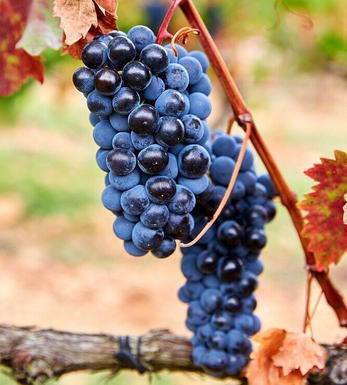
Southern Rhône Blend
The vast majority of wines from the Southern Rhône are blends. There are 5 main black varieties, although others are used and the most famous wine of the region, Châteauneuf du Pape, can be made from as many as 13 different varieties. Grenache is the most important grape in the southern Rhône - it contributes alcohol, warmth and gentle juicy fruit and is an ideal base wine in the blend. Plantings of Syrah in the southern Rhône have risen dramatically in the last decade and it is an increasingly important component in blends. It rarely attains the heights that it does in the North but adds colour, backbone, tannins and soft ripe fruit to the blend.
The much-maligned Carignan has been on the retreat recently but is still included in many blends - the best old vines can add colour, body and spicy fruits. Cinsault is also backtracking but, if yields are restricted, can produce moderately well-coloured wines adding pleasant-light fruit to red and rosé blends. Finally, Mourvèdre, a grape from Bandol on the Mediterranean coast, has recently become an increasingly significant component of Southern Rhône blends - it often struggles to ripen fully but can add acidity, ripe spicy berry fruits and hints of tobacco to blends.


Buying options
Add to wishlist
Description
Another terrific effort from this estate, the 2018 Chateauneuf du Pape Deus Ex Machina shares a sense of elegance with its vintage stablemate, the La Combe des Fous. Kirsch, stone fruit, black cherries, licorice, pomegranate…the list could go on and on. And while the wine is undeniably full-bodied, it doesn't come across as heavy or hot, instead being built on a lacy, silky structure of fine tannins and rounded acids that linger on the finish.
Pascal Maurel was reasonably happy with the 2018 vintage when I visited him in June 2019. "It's fine, elegant, feminine, not powerful like '15, '16, '17, but another side of the appellation," he said. His estate also controlled the mildew reasonably well, averaging yields of 25 hectoliters per hectare. The Maurel brothers have made a 2018 Sancto Santorum, but it wasn't available for tasting on the day of my visit. The 2017s have once again emerged as some of the finest wines in the appellation. "We were afraid [of the tannins] in the beginning," he said. "But after the élevage, we [found] the structure [to be] something very fine and well balanced." In addition to the 2017s and 2018s, we tasted three cuvées from 2009. "It wasn't the greatest vintage," Maurel said. "But it has some common points with 2017." While the regular bottling should be drunk up, the Deus Ex Machina still looks young, with plenty of life ahead of it.
The Maurel brothers went the extra mile to send me tank and barrel samples of their 2019s, so I've included those reviews here alongside the reviews of the bottled 2018s. Both years are successful here—the 2019s maybe slightly denser and more concentrated than the more elegant 2018s, but they aren't always better. This estate has become a model of consistency and excellence.
Drink 2020 - 2030
Joe Czerwinski, Wine Advocate (October 2020)
wine at a glance
Delivery and quality guarantee